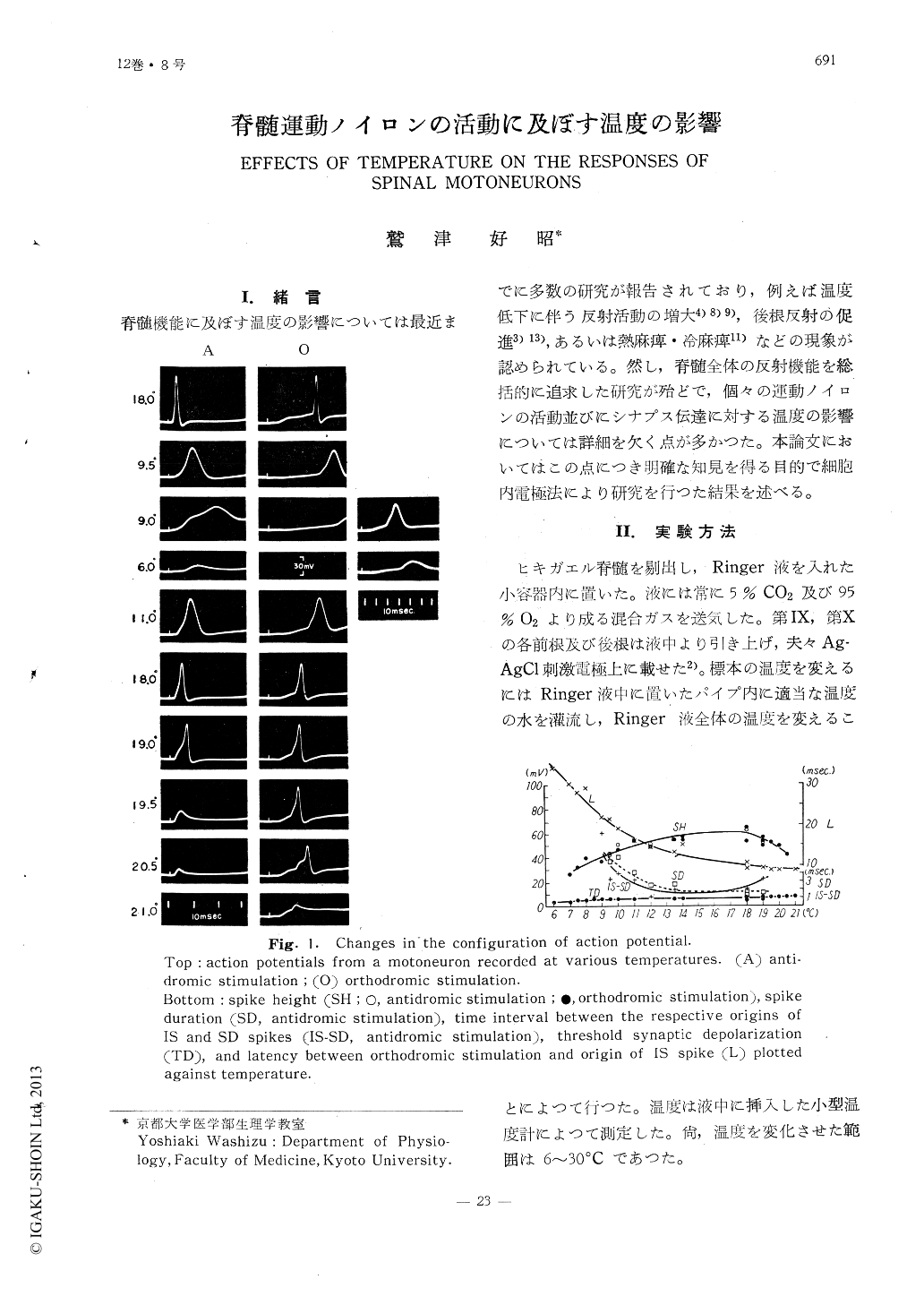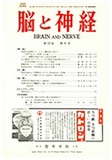Japanese
English
- 有料閲覧
- Abstract 文献概要
- 1ページ目 Look Inside
I.緒言
脊髄機能に及ぼす温度の影響については最近までに多数の研究が報告されており,例えば温度低下に伴う反射活動の増大4)8)9),後根反射め促進3)13),あるいは熱麻痺・冷麻痺11)などの現象が認められている。然し,脊髄全体の反射機能を総括的に追求した研究が殆どで,個々の運動ノイロンの活動並びにシナプス伝達に対する温度の影響については詳細を欠く点が多かつた。本論文においてはこの点につき明確な知見を得る目的で細胞内電極法により研究を行つた結果を述べる。
1) Effects of temperature changes (6-30℃) on the responses of toad's spinal moto- neurons were studied with intracellular microelectrodes.
2) Action potential diminished in amplitude as the temperature was either lowered or raised from 18-19℃. Spike duration was increased by cooling. Temperature coefficients (Q10) of spike height and spike duration were found to be in ave- rage 1.2 and 2. 5 (10-18℃) respectively.
3) Excitability of motoneurons was found to be maximal at the temperature bet- ween 9℃ and 16℃, with average 13℃.
4) Antidromic conduction was blocked either between initial segment and soma, or between medullated part of axon and ini- tial segment by cooling or warming. Warming above 20-21℃ always aboli- shed antidromic invasion of impulses into motoneuron somata.
5) Failure of synaptic transmission by war- ming (above 21-22℃) was mainly attri- butable to the lowered excitability of mo- toneuron and the reduced excitatory sy- naptic potential. The latter was the main cause of the transmission failure by cooling.
6) Cooling enhanced repetitive discharge of spike potentials in some motoneurons.

Copyright © 1960, Igaku-Shoin Ltd. All rights reserved.


